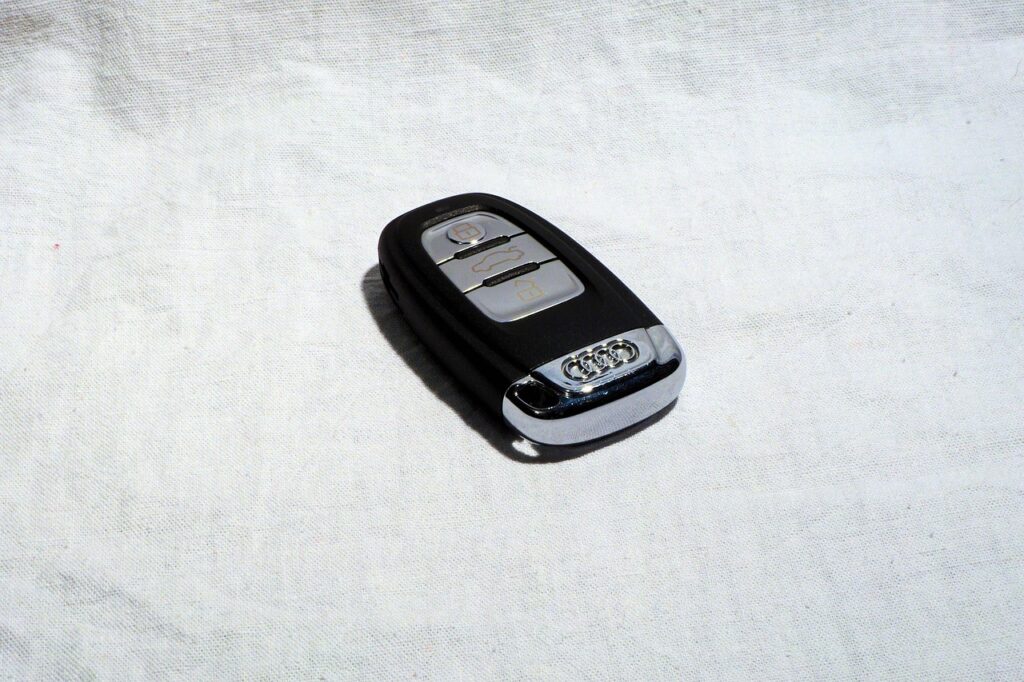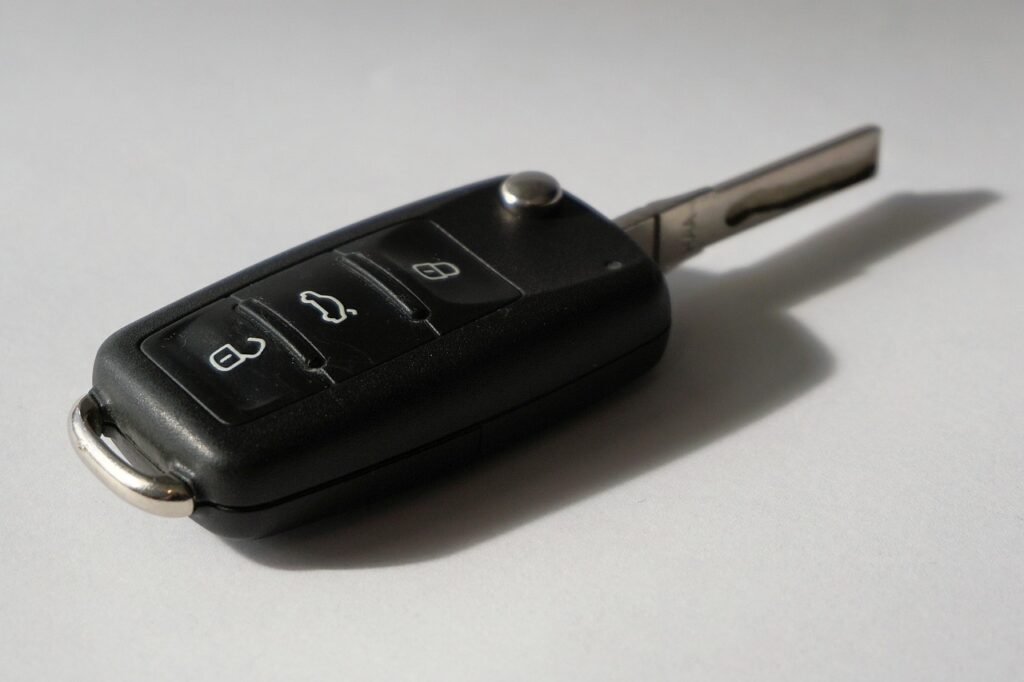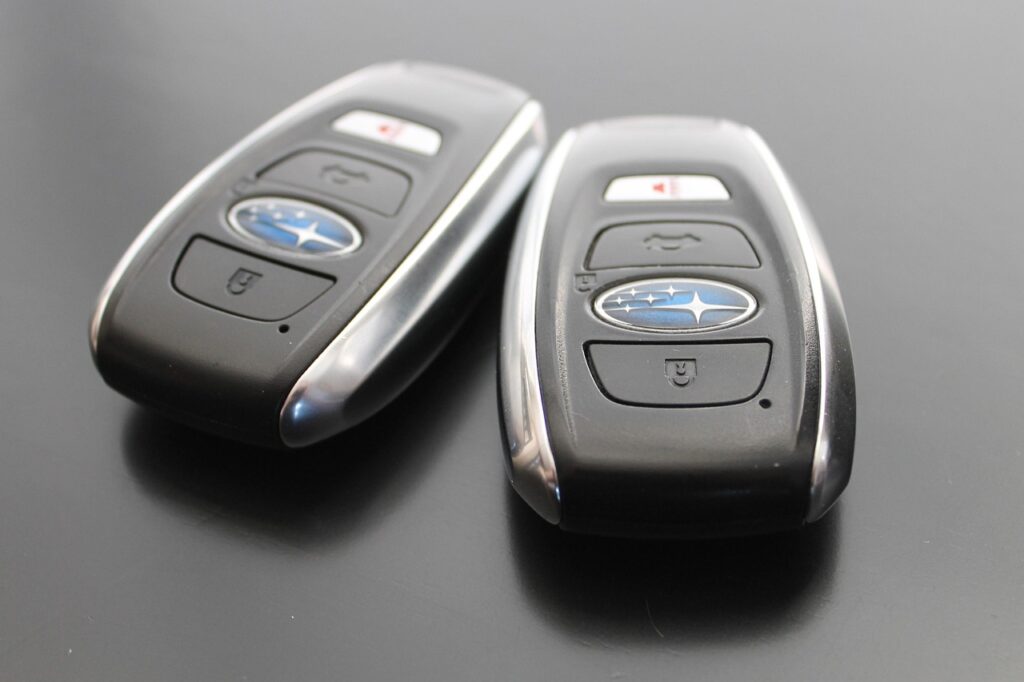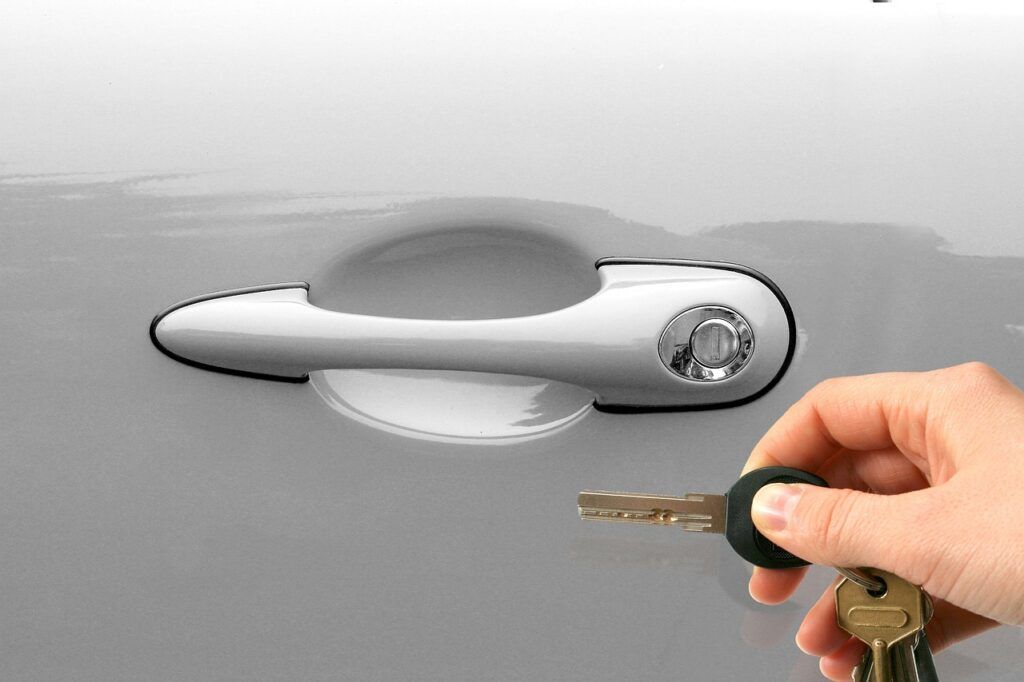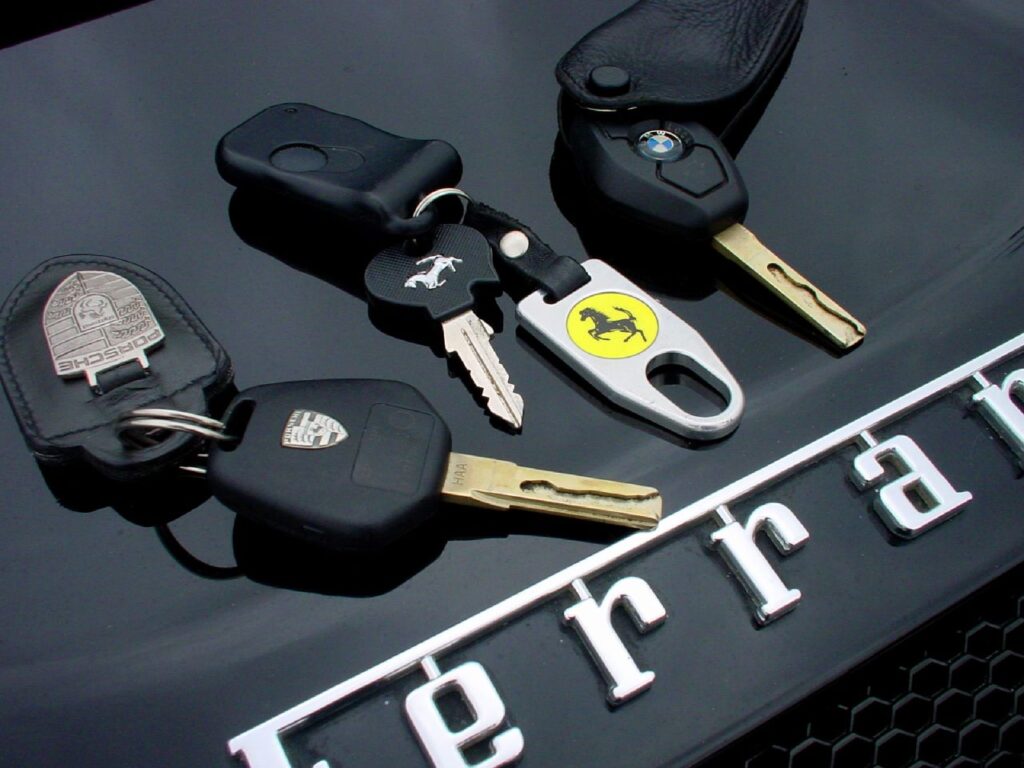
The clang of a metal key inserting into an ignition cylinder, the satisfying turn, and the rumble of an engine coming to life—these are sensory experiences deeply ingrained in the ritual of driving. Yet, this age-old tradition is rapidly fading into the rearview mirror. Across the automotive landscape, a silent revolution is underway, one that seeks to liberate drivers from the tyranny of physical keys and usher in an era of effortless, connected vehicle access.
This seismic shift isn’t merely about convenience; it’s a profound re-evaluation of how humans interact with their machines. Automakers are increasingly embracing advanced technologies to enhance security, streamline user experience, and seamlessly integrate vehicles into our digital lives. The motivations range from improving daily routines to enabling entirely new models of car ownership, fundamentally altering the concept of a “car key.”
In this in-depth exploration, we delve into 14 distinct innovations currently being implemented or explored by car manufacturers, all aimed at consigning the traditional car key to the history books. This first section will illuminate the initial seven fundamental advancements that are paving the way for a keyless future, dissecting their mechanisms, benefits, and the profound impact they are having on the modern driving experience.

1. **Push-Button Start Systems**The most visible and widespread change in automotive ignition systems is undoubtedly the advent of the push-button start. What began as a luxurious novelty in high-end vehicles has swiftly evolved into a ubiquitous feature, transforming how drivers initiate their journeys across virtually every segment of the market. This innovation eliminates the need for a physical key insertion and turn, replacing it with a simple, elegant press of a button.
The underlying mechanism relies on keyless entry technology, where a sophisticated transmitter embedded within a key fob communicates wirelessly with the car’s onboard computer. Once the fob is detected within a predetermined range, typically inside the cabin, the system is armed, allowing the driver to press the button and bring the engine to life. This seamless process fundamentally redefines the act of starting a vehicle.
The primary appeal of push-button start systems lies in their unparalleled convenience. Drivers no longer need to fumble through pockets or bags in search of their keys; the fob can remain stowed away, offering a seamless and swift transition from approaching the vehicle to driving off. This ease of use, coupled with the sleek, uncluttered dashboard aesthetic it enables, has made it a highly desirable feature for modern consumers.
Indeed, data underscores this rapid adoption. Edmunds reports a staggering 91 percent of available vehicles for the 2019 model-year featured keyless ignitions as standard or optional equipment, a significant jump from 72 percent in 2014. These figures confirm that push-button start is no longer an optional enhancement but a foundational expectation in contemporary automotive design, deeply influencing how switching systems are integrated and function.
Read more about: Seriously Where Did They Go? 6 Legendary Games That Vanished From Arcades: Unearthing the Myths
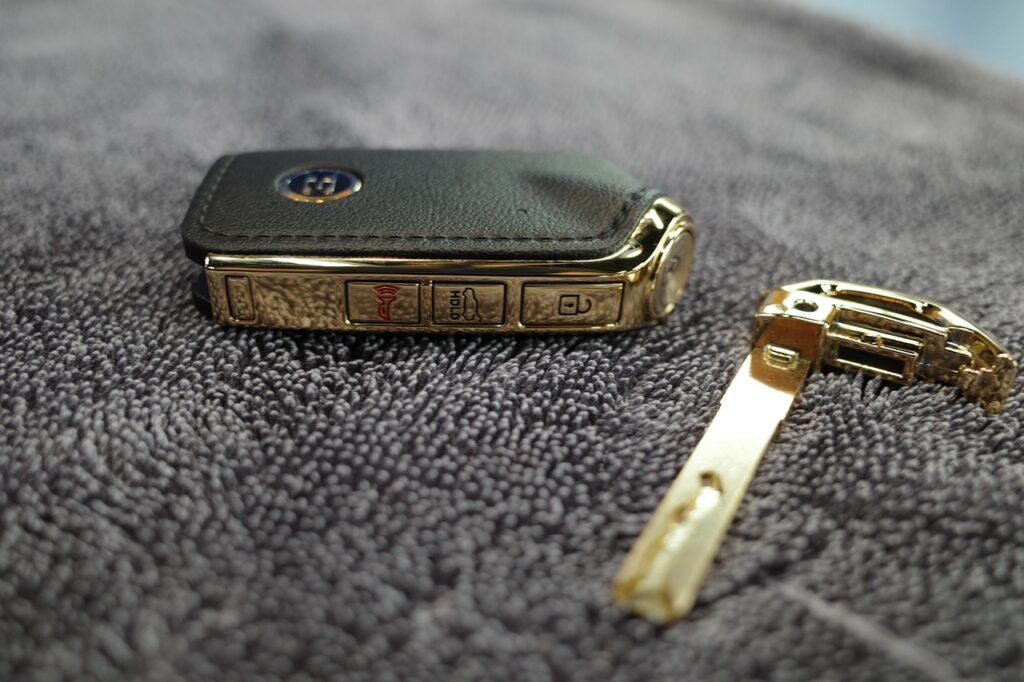
2. **Keyless Entry Technology**At the very heart of the push-button start revolution, and indeed many other advancements in key elimination, lies keyless entry technology. This sophisticated system is the unsung hero, quietly working in the background to recognize the authenticated driver and grant access to the vehicle without any physical interaction with a lock cylinder. It’s the critical bridge between carrying a digital credential and being able to operate the car.
The core principle involves a continuous, low-frequency radio signal emitted by the car, constantly searching for a corresponding signal from a valid key fob. When the key fob, equipped with its own transmitter, comes within a certain proximity—typically just a few feet from the car’s doors or trunk—it responds to the vehicle’s signal. This handshake authenticates the fob, allowing the car’s central locking system to unlock automatically.
This seamless process vastly improves the convenience factor, especially when approaching a vehicle with hands full of groceries or luggage. The traditional fumbling for keys to unlock a door becomes a relic of the past, replaced by an automatic and almost imperceptible granting of access. It’s about making the entire vehicle experience more effortless, removing friction from the very first interaction with the automobile.
Read more about: The Mechanic-Approved Guide: 15 Top Used Cars Under $10,000 That Still Earn High Marks for Reliability

3. **Smart Key Fobs with Rolling Security Codes**As the reliance on wireless communication for vehicle access has grown, so too has the imperative for robust security. Smart key fobs, while superficially similar to their earlier remote-entry counterparts, incorporate advanced encryption and dynamic security measures, most notably the use of rolling security codes. This innovation significantly elevates the anti-theft capabilities of modern vehicles, providing peace of mind in a digital age.
A rolling security code, sometimes referred to as a “hopping code,” is a security mechanism employed in remote keyless entry systems to prevent replay attacks, where a thief records and retransmits the wireless signal to unlock a vehicle. Each time the fob is used, it generates a unique, pseudo-random code that the vehicle’s receiver expects. This code changes with every activation, ensuring that a previously captured signal becomes instantly invalid.
This sophisticated cryptographic technique makes smart key fobs exceptionally difficult to replicate or hack through simple signal interception. Unlike older, static-code remote entry systems that were vulnerable to “code grabbing,” the dynamic nature of rolling codes means that even if a signal is captured, it cannot be reused to gain unauthorized access. This substantially reduces the risk of car theft stemming from electronic vulnerabilities.
Read more about: The Long Road to Universal EV Charging: Unpacking 11 Key Challenges and Disparate Standards
4. **Remote Start Capabilities**Beyond merely unlocking doors and starting the engine, modern automotive systems are enhancing convenience through remote start capabilities. This feature allows drivers to initiate their vehicle’s engine from a distance, preparing the cabin to their desired climate before they even step inside. It’s a clear step away from the need for direct physical interaction with the car, epitomizing effortless control.
The utility of remote start is particularly evident in climates with extreme temperatures. Imagine a sweltering summer day; a simple press on a key fob or a tap on a smartphone app can activate the air conditioning, cooling the interior to a comfortable level before entry. Conversely, on a frigid winter morning, the engine can be started to warm the cabin and defrost windows, making the initial drive significantly more pleasant and safer.
These systems typically leverage the same wireless communication infrastructure as keyless entry and push-button start. The command is sent from the smart key fob or a connected smartphone application, received by the vehicle’s control module, and then executed. This integration ensures a cohesive user experience, where a single device can manage multiple vehicle functions from afar, enhancing overall convenience and comfort.
Read more about: 10 Unexpected Ways Your New Car Insurance Policy Can Beat Your Old One’s Price

5. **Smartphone Apps as Primary Car Keys**Perhaps the most radical departure from the traditional car key paradigm is the emergence of the smartphone as a primary vehicle key. This innovation effectively consolidates access and control into a device most people carry constantly, pushing the concept of “keyless” to its logical extreme. It’s a powerful testament to the convergence of personal electronics and automotive technology, redefining the very definition of a car key.
Tesla was a trailblazer in this space, notably with its Model 3. Owners of the Tesla Model 3 do not receive traditional car keys or even fobs as their primary means of access. Instead, the automaker provides them with a smartphone app that serves as the key to gain entry and operate the car. This marked a significant milestone, proving that a vehicle could function entirely without a dedicated physical key for day-to-day use.
Following Tesla’s lead, other manufacturers have quickly embraced this concept. Lincoln, for instance, launched its “Phone as a Key” feature, allowing smartphones to be set up as car keys. Debuting on models like the Aviator crossover, this system enables clients to lock and unlock the vehicle, open its trunk, and crucially, start and drive it—all without a traditional key fob. This personalized approach further deepens the integration between driver and vehicle.
The appeal of using a smartphone as a car key is multifaceted. As Cox Automotive executive publisher Karl Brauer aptly notes, “People’s phones have basically become a fifth limb now.” The inherent value and constant presence of a smartphone mean users are more likely to keep track of it, reducing the chances of misplacing a dedicated car key, enhancing both convenience and perceived security.
Read more about: The Great Tech Purge: 14 Iconic Smartphone Features That Secretly Vanished from Our Pockets
6. **Bluetooth Communication for Digital Keys**The ubiquitous short-range wireless technology, Bluetooth, serves as a fundamental communication backbone for many digital key systems, particularly those that integrate with smartphones. It’s the silent workhorse that enables your phone to talk to your car, facilitating the commands for unlocking, starting, and managing various vehicle functions. This widespread standard has played a crucial role in bridging the gap between mobile devices and automotive access.
When a driver uses a smartphone app as a car key, Bluetooth Low Energy (BLE) protocols are often employed to establish a secure, localized connection between the phone and the vehicle. This connection allows the car to authenticate the digital key stored on the smartphone, verifying the user’s identity and permissions. The elegance of Bluetooth lies in its efficiency and its near-universal presence in modern mobile devices, making it an accessible solution for manufacturers.
However, current Bluetooth-based systems are not without their limitations. The context mentions that “it can take seconds or more for a vehicle to respond to remote commands from a smartphone.” This delay highlights a potential area for improvement in responsiveness, especially as drivers expect instantaneous reactions from their vehicles. Consumer Reports also noted instances where testers had problems with app-based systems when the app was closed.
Read more about: The Great Tech Purge: 14 Iconic Smartphone Features That Secretly Vanished from Our Pockets
7. **Onboard Wi-Fi Integration for Key Functions**While Bluetooth has been a cornerstone for many digital key implementations, particularly those involving smartphones, some manufacturers are also leveraging the vehicle’s onboard Wi-Fi to enhance and support key functions. This approach offers an alternative or supplementary layer of connectivity, potentially providing greater bandwidth and range for more complex digital interactions between the vehicle and personal devices.
Lincoln’s “Phone as a Key” system, for instance, explicitly states that it uses “Bluetooth or the vehicle’s onboard Wi-Fi to communicate with the smartphone.” This dual-protocol strategy provides redundancy and flexibility, ensuring that the digital key system can function reliably under various conditions. Wi-Fi can offer a more robust and faster connection compared to Bluetooth for certain data-intensive tasks or when a wider range of communication is desired.
The integration of onboard Wi-Fi extends beyond mere key functions, playing a crucial role in the broader connected car ecosystem. It enables over-the-air updates for infotainment systems, remote diagnostics, and the seamless streaming of media. By also harnessing this capability for key-related operations, manufacturers are creating a more cohesive and intelligent vehicle network that can manage access and control more efficiently.
Read more about: The Definitive Guide: 14 Life-Changing Tech Gadgets Under $100 That Deliver Exceptional Value and Innovation
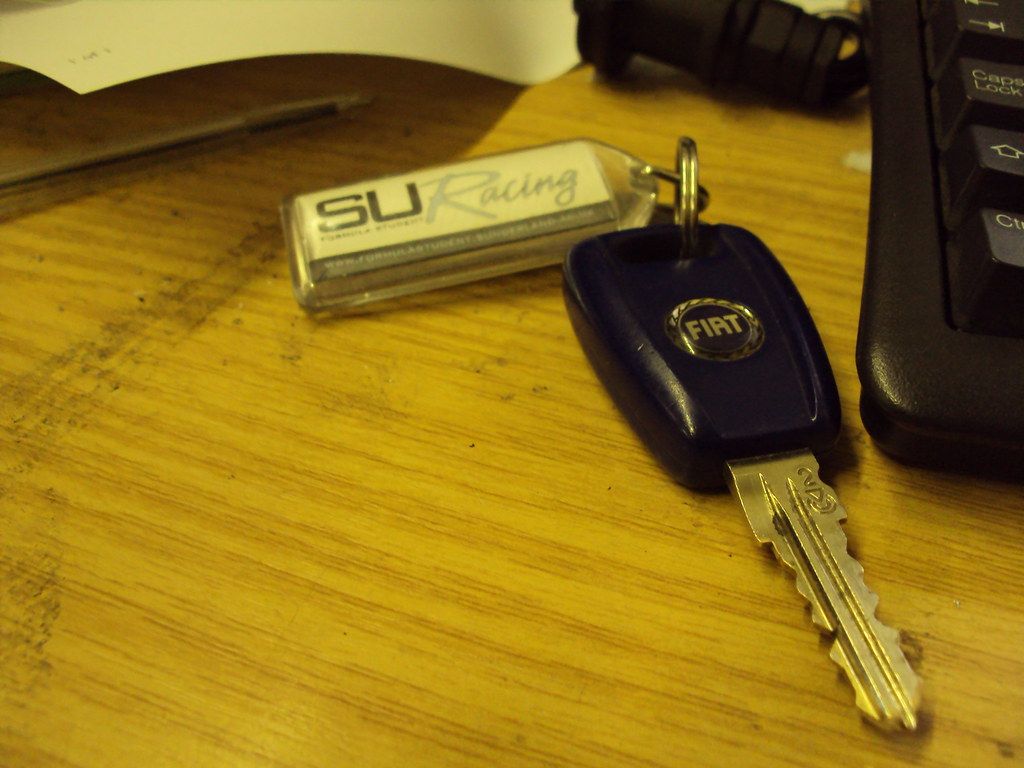
8. **Digital Keys and the Rise of Shared Mobility**The evolution away from traditional car keys isn’t just reshaping individual car ownership; it’s a pivotal enabler for the burgeoning shared mobility sector. Keyless car systems are proving indispensable for vehicle subscription services and car-sharing businesses, including the rapidly approaching era of autonomous vehicles. The fundamental idea that a car can be accessed and operated without a physical key is making these innovative models not just feasible, but highly efficient and secure.
Consider GM’s Maven car-sharing service, which has been entirely keyless since its inception in 2016, relying on an app for access. While GM hasn’t yet extended this to allowing individual owners to drive their vehicles with a smartphone, the precedent for shared fleets is firmly established. Customers of such programs utilize an app to activate remote functions, from starting the engine and adjusting the climate to ultimately driving the vehicle itself, streamlining the entire rental or sharing process.
This shift offers more than mere convenience; it brings significant safety benefits to the forefront. Edmunds’ executive director of industry analysis, Jessica Caldwell, highlights that the keyless concept is crucial for personal safety, especially with autonomous vehicles that might arrive at a user’s door. A digital key connected to a user profile could even assist emergency services in identifying the driver during an accident, potentially providing vital information like blood type or allergies, thereby enhancing pre-hospital care.
The implications for urban transportation are profound, paving the way for fleets of vehicles that can be summoned, used, and returned without ever needing a human to hand over a physical key. This frictionless interaction is fundamental to the scalability and user experience of future mobility solutions, simplifying logistics and enriching user flexibility in shared, smart city environments.
Read more about: The Resurgence of the Real: 14 Analog Technologies from the 70s Making a Modern Comeback

9. **Ultra-Wideband (UWB) for Enhanced Precision and Security**While Bluetooth Low Energy (BLE) has been instrumental in bridging the gap between smartphones and vehicles for digital key functions, the quest for instantaneous response and even greater security is driving the adoption of Ultra-Wideband (UWB) technology. Current Bluetooth-based systems can sometimes introduce a delay, with vehicles taking “seconds or more for a vehicle to respond to remote commands from a smartphone,” as noted in discussions around the technology. This slight lag, while minor, can be a friction point in a world that increasingly expects immediate interactions.
Enter Ultra-Wideband, a technology poised to revolutionize the precision and responsiveness of keyless access. Automakers like Volkswagen are actively integrating UWB connections into upcoming vehicles, moving beyond Bluetooth to achieve communication and response times in milliseconds. This dramatic reduction in latency translates to a far more seamless and intuitive user experience, eliminating those small delays that can detract from the feeling of effortless control.
Beyond speed, UWB offers significantly enhanced security through its ability to precisely determine location and distance. This spatial awareness makes it extremely difficult for sophisticated thieves to employ “relay attacks,” where signals are intercepted and retransmitted to trick the car into thinking the key is present. UWB can detect if a signal is being tampered with or relayed from an unauthorized distance, bolstering anti-theft measures considerably.
As a principal research analyst at Navigant Research, Sam Abuelsamid, predicts, “You’re going to start seeing more of this ultra-wideband technology be used in vehicles going forward.” Its capacity to “send a lot more messages back and forth between the transmitter and receiver” not only speeds up authentication but also opens the door for more intricate, location-aware functionalities.
10. **Biometric Authentication: Fingerprints, Facial Recognition, and Beyond**The journey towards eliminating traditional car keys naturally leads to exploring increasingly sophisticated forms of user authentication. Beyond simply detecting a fob or smartphone, manufacturers are integrating biometric security measures directly into the vehicle experience. This cutting-edge approach aims to verify the driver’s identity through unique biological characteristics, offering an unparalleled level of security and convenience.
Fingerprint recognition is one such prominent example, identified as a “potential biometric security measure” in the context of push-button start systems. Imagine pressing the start button, and simultaneously, your unique fingerprint is scanned and verified, granting access and ignition in a single, fluid motion. This integration removes the need for any external device, making the car intrinsically aware of its authorized user.
The ambition extends beyond fingerprints. As automakers innovate, they are actively “reshaping how vehicles recognize and authenticate users, integrating sophisticated technologies that reflect contemporary demands for safety and connectivity.” This could encompass a broader spectrum of biometrics, such as facial recognition systems that identify the driver upon entry, or even iris scans, ensuring only the rightful owner can operate the vehicle.
While eye scanners are already being deployed to monitor driver attention, nudging with haptic feedback when inattention is detected, the logical progression is to extend this technology to initial authentication. Such systems would not only ensure the car is being driven by an authorized individual but also potentially recall personalized settings associated with that specific driver profile, creating a truly bespoke and secure driving environment.
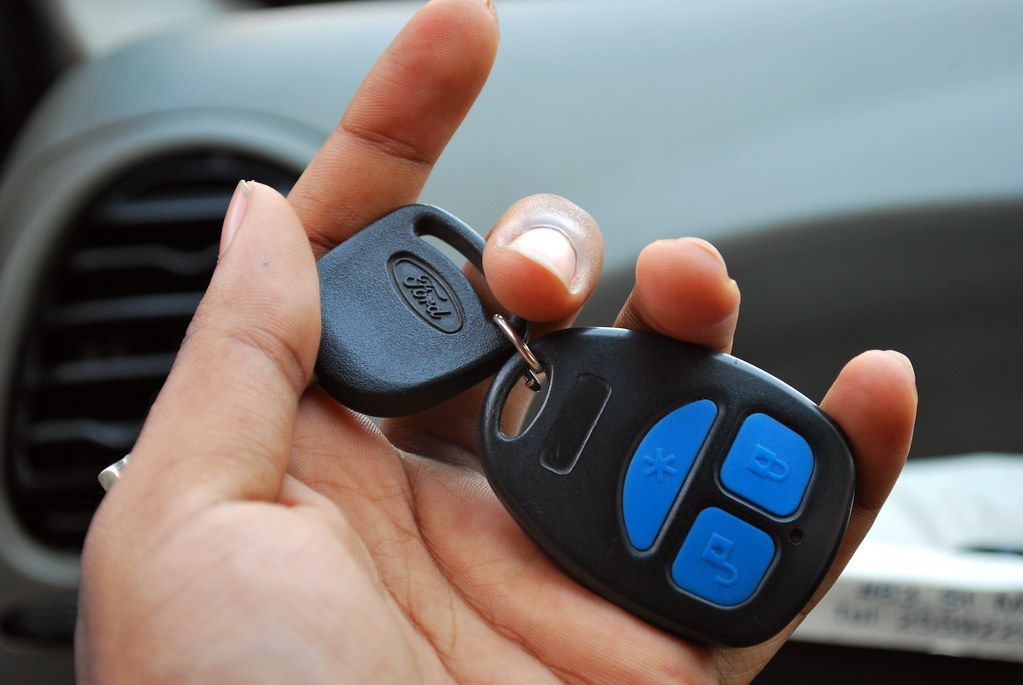
11. **Cloud-Based Remote Vehicle Management and Diagnostics**The ability to manage and interact with a vehicle from virtually anywhere is a cornerstone of the keyless revolution, largely powered by sophisticated cloud connectivity. Automakers have long offered basic remote functions, allowing owners to control features like remote start, locking, and unlocking from their smartphones. These capabilities inherently rely on a robust cloud infrastructure to relay commands between the user’s device and the vehicle.
Beyond simple commands, manufacturers are increasingly “harnessing cloud connectivity to facilitate remote diagnostics,” transforming how vehicles are maintained and problems are identified. This means a car can communicate its health status, flag potential issues, and even schedule service appointments autonomously, all through its connection to the cloud. This seamless integration between vehicle systems and user devices enhances both convenience and reliability.
The push-button start system itself, as a digital framework, benefits immensely from this connectivity, with “cloud connectivity facilitat[ing] updates and vehicle diagnostics.” This ensures that the car’s software, including its key access protocols, can be kept current with the latest security patches and feature enhancements, all delivered wirelessly without a trip to the dealership. It’s an ongoing evolution of the vehicle’s digital brain.
By leveraging this capability for key-related operations, manufacturers are forging “a more cohesive and intelligent vehicle network that can manage access and control more efficiently.” This central nervous system, residing in the cloud, not only authenticates digital keys but also manages permissions for shared users, tracks vehicle location, and ensures that the entire digital key ecosystem operates smoothly and securely, reflecting a profound shift in vehicle interaction.
Read more about: The Vanishing Act: 12 Car Features Automakers Are Quietly Removing and What Every Buyer Needs to Know Before Signing
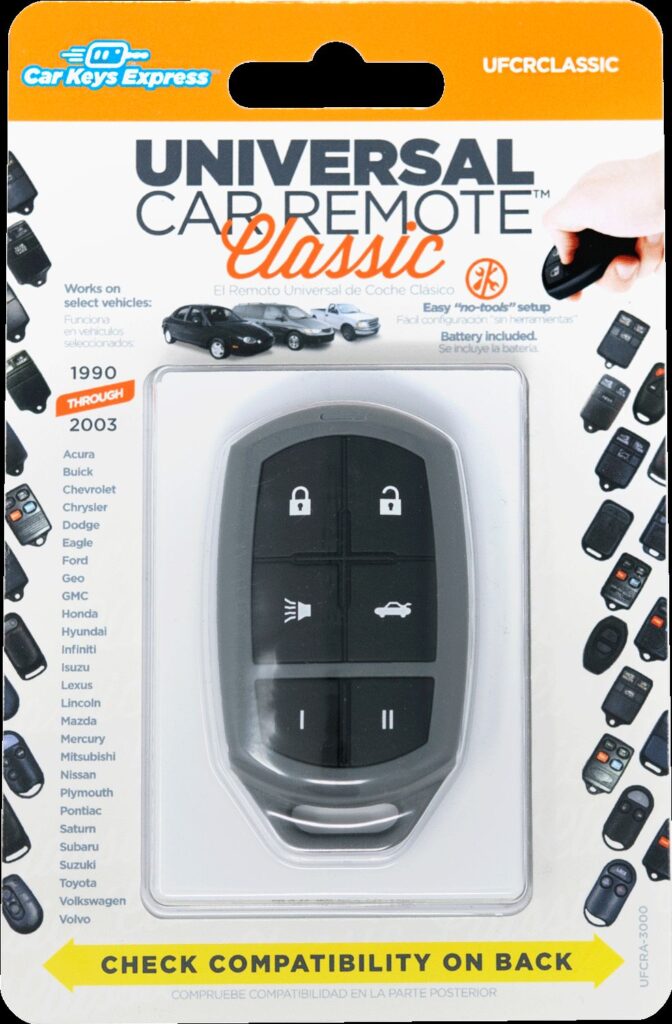
12. **Ensuring Redundancy: Physical and Digital Backup Key Systems**While the promise of a truly keyless future is compelling, automakers are keenly aware of the practical challenges and potential pitfalls associated with relying solely on digital access. Questions inevitably arise: “What if the phone dies or gets lost? What if a driver needs to valet the vehicle? Or what if the system doesn’t function as designed?” These are critical considerations that demand robust solutions to ensure uninterrupted vehicle access and operation.
To address these concerns, manufacturers are implementing thoughtful backup systems. Tesla, a pioneer in smartphone-as-key technology, provides Model 3 owners with a discreet backup keycard, offering an alternative means of entry and ignition should their primary smartphone key be unavailable. Similarly, Lincoln, with its “Phone as a Key” feature, continues to supply owners with a standard key fob, ensuring a familiar and reliable fallback.
These redundancies are not merely about providing a physical alternative; they represent a layered approach to security and accessibility. Digital keys, combined with continuously “updated technology to allow for faster access,” are designed to work in conjunction with these backup methods, mitigating the risk of being stranded. This foresight acknowledges that even the most advanced digital systems can face real-world disruptions.
Consumer Reports, a vigilant observer of new automotive technologies, highlighted instances where testers encountered problems with Tesla’s app-based key system, such as being “unable to open the Model 3’s door when they had closed the app — the modern equivalent of fumbling for keys at the bottom of a purse.” Such experiences underscore that redundancy is a necessity in the keyless era, ensuring drivers are never left without access.
Read more about: Power Outage Peril: The Home Security Systems That Leave You Vulnerable in the Dark
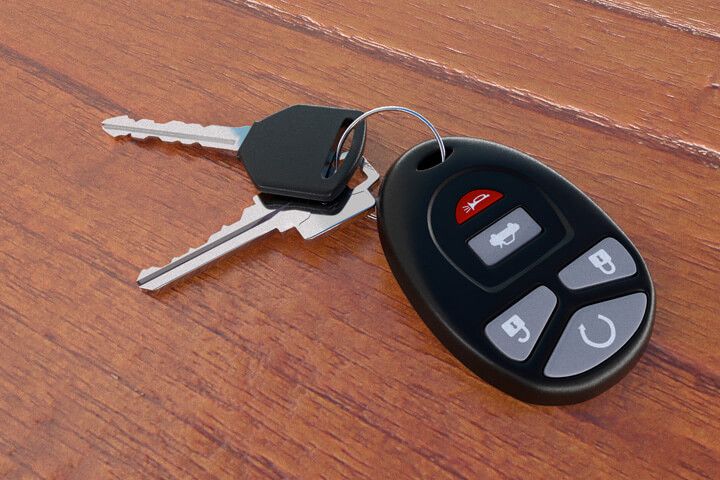
13. **Hyper-Personalization with Digital Key Profiles**Beyond the fundamental act of unlocking and starting a vehicle, digital key systems are unlocking unprecedented levels of personalization, fundamentally transforming the driving experience. As seen with Lincoln’s “Phone as a Key” feature, setting up a smartphone as a car key transcends mere access; it becomes a gateway to a deeply customized vehicle environment. This system allows clients to not only lock, unlock, open the trunk, and drive the vehicle but also tailors the entire cabin to their preferences, all without a traditional key fob.
Joy Falotico, Lincoln President, describes this capability as a “natural extension” of customer profiles. The system enables the luxury brand to “better tailor dozens of infotainment settings and interior cabin preferences such as climate, audio and seating to individual drivers.” This means that as soon as the authenticated digital key is detected, the car can automatically adjust seat positions, mirror angles, radio stations, climate control, and even ambient lighting to suit the specific driver.
This “personalized approach further deepens the integration between driver and vehicle,” creating a symbiotic relationship where the car anticipates and responds to the user’s needs before they even settle in. It’s about more than just convenience; it’s about crafting a seamless and highly intuitive interaction that minimizes adjustments and maximizes comfort from the moment of entry.
Furthermore, this profile connectivity could extend to critical safety applications. Jessica Caldwell of Edmunds suggests that a digital key linked to a profile could “assist emergency units and others in gathering information about who was driving the vehicle in the case of emergency.” This could allow first responders to “prep for the person ahead of time for a myriad of things such as blood type and allergies,” adding a profound, life-saving layer of personalization.
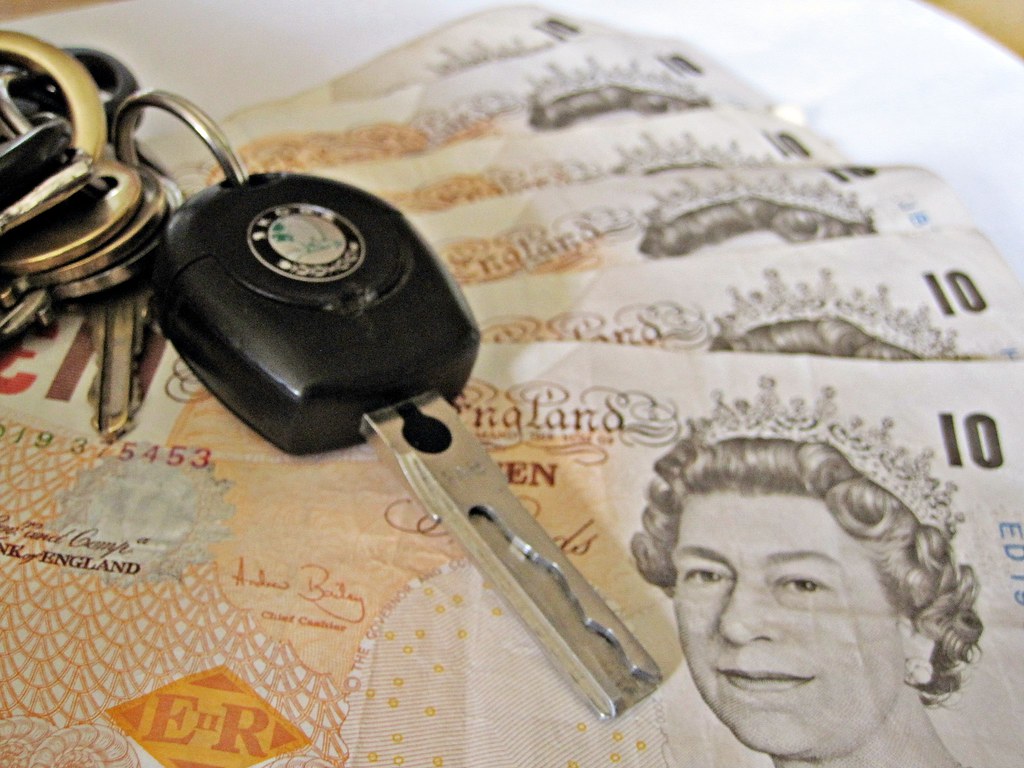
14. **Longevity and Compatibility: The Future Challenge of Digital Keys**As car manufacturers sprint towards a keyless future, a critical long-term consideration emerges: the enduring compatibility and longevity of digital key systems. Unlike traditional mechanical keys, which often outlast the cars they operate, digital keys are intrinsically linked to rapidly evolving technologies, primarily smartphones. Consumer Reports aptly points out this dilemma: “The lifespan of a car is far longer than that of any smartphone, so suppliers will have to work with phone manufacturers to ensure that their virtual-key technology remains compatible over the years.”
This challenge necessitates unprecedented levels of collaboration between automakers and smartphone providers. For keyless systems to remain reliable over the typical decade-plus lifespan of a vehicle, there must be a concerted effort to “ensure their systems communicate effectively with one another,” as emphasized by Consumer Reports. This involves navigating updates to mobile operating systems, changes in hardware, and the constant iteration of wireless communication protocols.
Without this ongoing coordination, drivers could face obsolescence issues, where their aging vehicle might struggle to recognize newer smartphone models, or vice versa, leading to frustrating access problems. It’s a complex dance of hardware and software, requiring forward-thinking design and robust, standardized protocols to guarantee that digital keys remain functional and secure across generations of personal devices and automotive platforms.
Ultimately, the drive to eliminate traditional keys is not just about adopting new tech; it’s about engineering a resilient, adaptable ecosystem. While “digital keys combined with updated technology to allow for faster access are expected to assist in overcoming such problems,” the continuous evolution of these systems will be paramount. Ensuring that a car bought today can seamlessly integrate with a smartphone bought five or ten years from now is the silent, yet monumental, engineering feat underpinning true keyless success.
**Conclusion:**
Our journey through the evolving landscape of automotive access reveals a clear and irreversible trajectory: the traditional metal car key is rapidly becoming a relic of a bygone era. From the satisfying click of a push-button start to the seamless integration of our smartphones, and the promise of biometric recognition, manufacturers are meticulously crafting a future where vehicle access is effortless, intelligent, and deeply integrated into our digital lives. These innovations, encompassing everything from shared mobility platforms to ultra-wideband precision, are not just about convenience; they are about fundamentally enhancing security, personalizing the driving experience, and preparing for an interconnected world where our cars are as smart as our devices.
Read more about: Beyond the Hype: Decoding the True Impact of Every Gaming PC Component Pros Rely On
While the road ahead presents its own set of challenges—from ensuring long-term compatibility between ever-changing technologies to refining the robustness of backup systems—the automotive industry is clearly committed to this transformative path. The motivations are compelling: improved safety, heightened security against theft, and a driving experience that removes friction at every turn. As we look forward, the thought of fumbling for a physical key might soon evoke the same nostalgic curiosity as cranking a car by hand. Welcome to the future where the key is an experience, not a thing.

